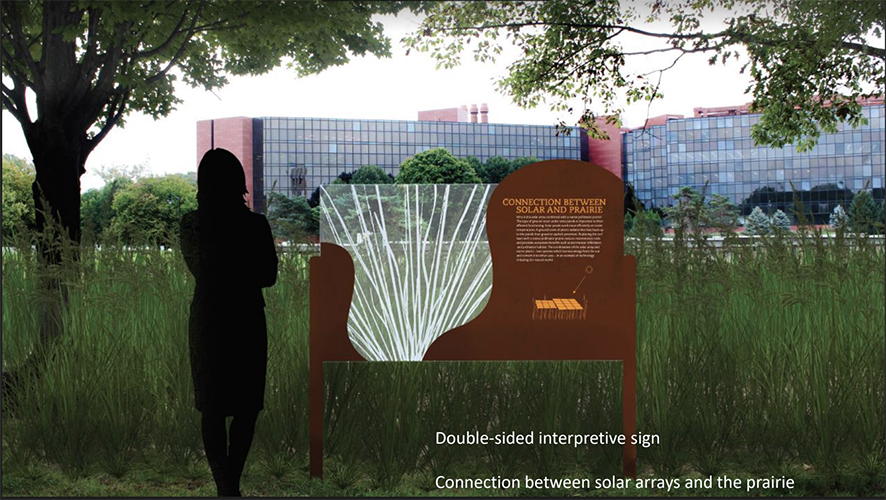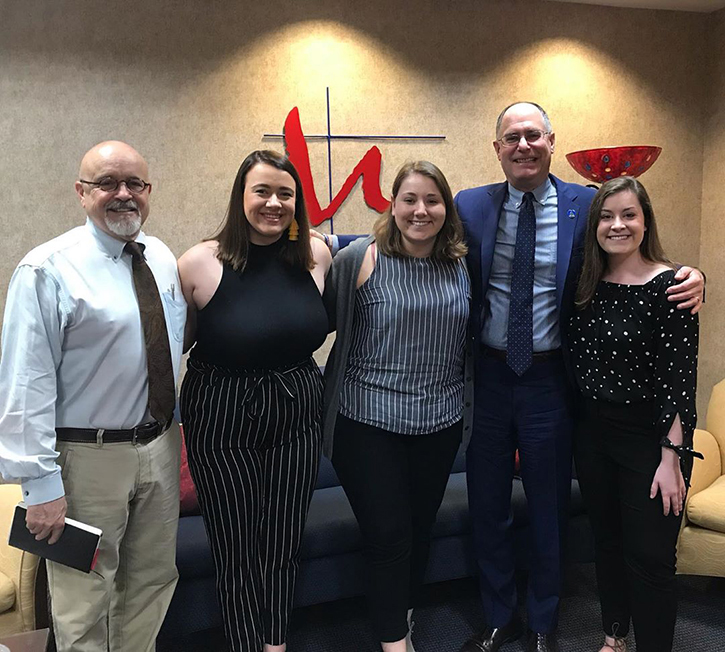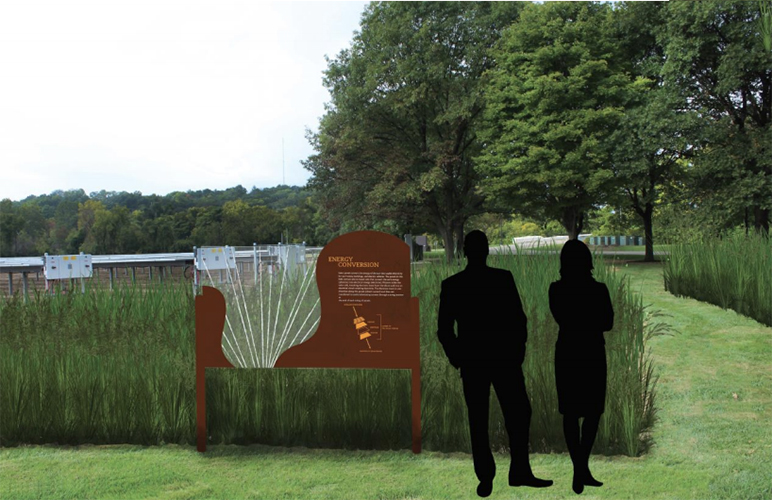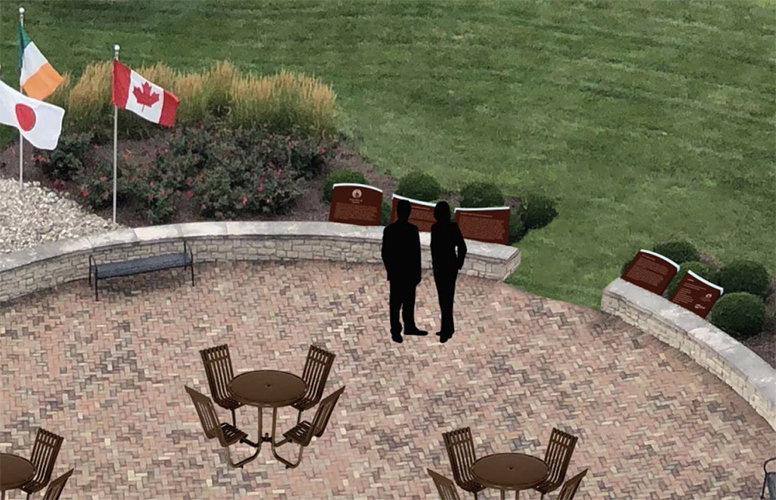Hanley Sustainability Institute

Solar prairie signage team hopes designs soon turn into reality
By Mark Gokavi
The University of Dayton partners responsible for the solar array and pollinator prairie at Daniel J. Curran Place feel another element is needed to tie the project together: signage.
Thanks to students in professor John Clarke’s design-science synthesis course, a system of displays was developed and could just be a final push away from installation. The signs will tell the solar prairie’s tale of innovation, partnership and experiential learning.
Facilities Management, the Hanley Sustainability Institute, Clarke and six students — Erin Butrica ‘18, Claire Cullen ‘18 and Sarah Fieldhammer ‘18 were joined by Caitlin Marshall ‘19, Payton Oakes ‘19, and Emily Gorenc ‘19 — started the project in fall 2018.
‘Allowed me to grow’
The one-semester course grew into a year-long initiative that became more like a job, especially for the three 2019 graduates who eventually earned a meeting with UD President Eric Spina to discuss the project.
“This experiential learning opportunity allowed me to grow as a designer, professional, and teammate, which alone is a substantial takeaway,” Gorenc said. “However, it would be fulfilling to see all of our hard work over the past year actually come to fruition.
“It is my hope that the installation of the signs would lead to greater awareness and education about sustainability efforts that are taking place on campus, specifically showcasing the solar prairie as a prime example.”
The students said Clarke, Steve Kendig, Leah Ceperley and Katie Schoenenberger all played key roles, with Ceperley shepherding the project.
‘It was fun to try to problem solve’
Ceperley, University of Dayton sustainability planning and evaluation manager and Schoenenberger, HSI’s director of student engagement, approached Clarke with the project idea as an opportunity for students to apply their coursework to an on-campus project. It was a double win: student hands-on learning experience and developing signage for the new solar prairie. Ceperley and Schoenenberger acted as clients and met with the designers to discuss concepts. Kendig, University of Dayton executive director of energy utilization and environmental sustainability, and other facilities management staff provided feedback on project ideas.
“Once we presented (to Clarke), we then decided it was necessary to include (additional) facilities staff on the project to give us more realistic expectations for what we could do with the space,” Oakes said. “Working with facilities staff made us realize we couldn't fully invade the space and take over, and, although facilities staff came with limitations to our project, it was fun to try to problem solve around those limitations to still execute our designs.”
Ceperley said the funding process, scheduling, design work and other temporary roadblocks are natural. “It’s a learning opportunity for everyone, including the students and faculty, to shepherd an idea from design to implementation, seeing first-hand the time, resources, and relationships it takes,” she said. Unlike traditional coursework, iIt’s not a project that gets done in one semester.”
Marshall said some meetings were casual, some had intense, “yet friendly” discussions about problems, setbacks and challenges such as budgets and safety concerns.
“As designers, we came up with some pretty out-of-the-box ideas regarding the materials we wanted to use for our signage; this led to a lot of conversations regarding how we were going to maintain it, if it would be practical cost-wise, and if it could risk potential weather damage over time as outdoor signage,” Marshall said. “In the long run, our design became all the more successful because of the lengthy conversations. Meeting with facilities staff and having such serious discussions was such an invaluable experience with real-life design clients. They helped us to gain multiple perspectives and served as excellent practice for learning how to properly articulate our vision as designers.”
Creating a ‘cohesive’ system
The original 22-display signage system called for materials such as acrylic/glass and bronze/metal with colors and shapes that fit the landscape.
“Working with Leah and Katie challenged us to think from their perspective and create a design system that effectively displays the information, while relating back to the form and function of the solar prairie,” Gorenc said. “We were intentional in choosing the type palette, color palette, materials, and scale. We were also mindful of Curran Place and wanting the signage and building to be cohesive.”
Marshall said working with Clarke was more like working with a peer than a professor.
“He trusted our decisions, and he wanted us to figure things out for ourselves,” she said. “There were countless times where we all were looking to him for answers, and even times where we were like, ‘John, can you please just tell us what to do?’
“He always made us figure it out, though. He wanted us to really think through things and made us explain why we made the design decisions that we did. This project prepared me in so many ways for what is to come in the future as a professional designer and as a teammate.”
‘Interest in seeing this get done’
UD officials say the final funding mix from inside or outside the university is ongoing, though the solar panel company Melink has offered to contribute.
“There seems to be a fair amount of interest in seeing this get done. Certainly, I’m interested in that,” Clarke said. “I’m going to feel good about it because I know that this was work that students created. It would be great to have something that reminds people just how capable our students are and how important they are to us.”



